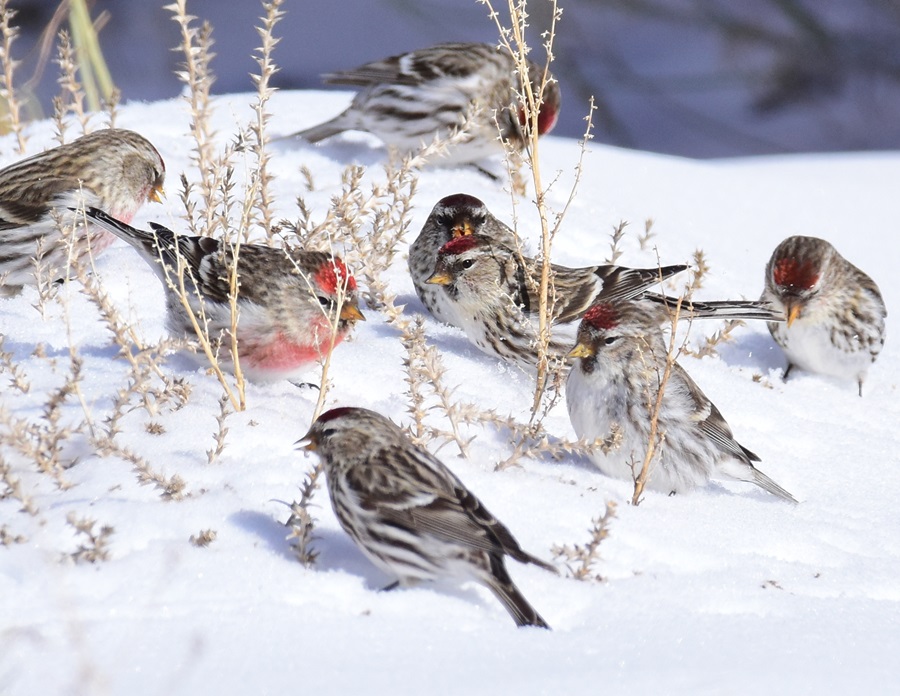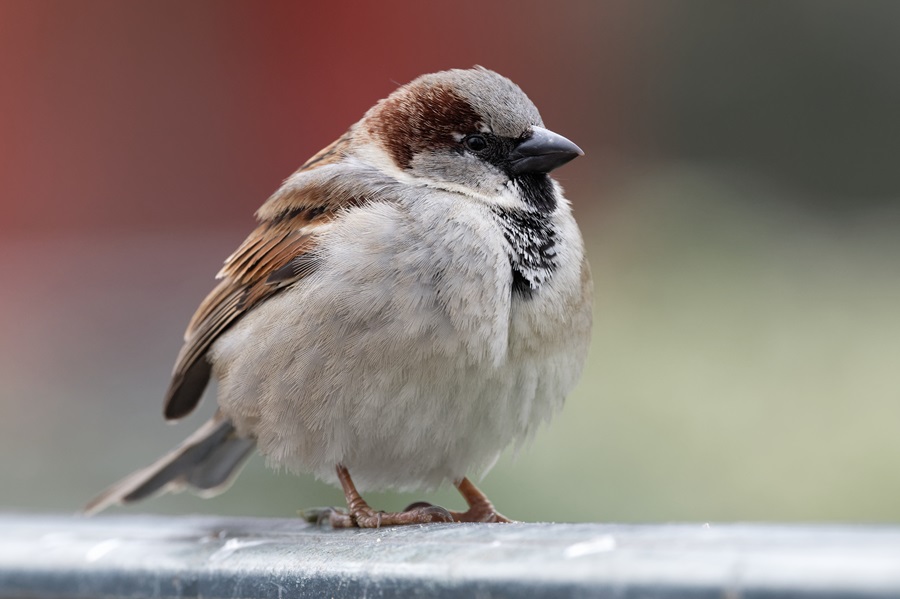Just about every conversation I’ve had over the last week has begun with some exchange of descriptors of this recent cold snap: it’s been chilly, windy, miserable.
But while we can retreat to our heated shelters, birds don’t have that option. The cold days and even colder nights are difficult for these animals that regularly maintain body temperatures above 100° F. Yet there are a lot of birds that spend the winter on the Outer Cape — likely hundreds of thousands of individual birds representing more than 100 species.
To get by, birds rely on a host of adaptations. Some of them are familiar to us humans. Others, however, seem strange — the kinds of adaptations only birds can make use of.
Birds are endotherms, or “warm-blooded” animals, just as we are. This means their body heat is generated internally by increasing their metabolism or by shivering. Snakes, for example, can’t do that. They need to be warmed up by the sun before they can move. Warm-bloodedness means that birds can more easily keep their bodies warm enough to survive in cold environments.
Since their bodies produce heat, one strategy birds use is to cuddle up for warmth. It’s not uncommon right now to see large flocks of pigeons huddled together on MacMillan Pier or the Wellfleet Marina, using each other for warmth.

Generating body heat comes at the cost, though, of having to consume more food. To deal with this, birds will bulk up by eating as much food as possible whenever it is available in the fall and through the winter, turning it into fat that their bodies can burn to keep warm.
Some birds, like chickadees, will also cache food to consume later — but remembering where they’ve cached it can be tricky. Chickadees expand their brain volume by 30 percent during the fall to accommodate new neurons devoted to that effort. During the winter, they find as much food as they can from what they’ve stored. This excess brain power is a sometime thing, however. When food is once again plentiful in the spring, chickadee brains shrink back down to their usual size.
Perhaps the best way to stay warm is simply to go someplace warmer. For most North American birds, this means migrating south, even for species we see all year. So, while “our robins” are here year-round, the ones we’re seeing now probably aren’t the same birds that are here in the summer. Our summer birds likely migrate south for the winter, while our winter birds probably originate from farther north, where it’s too cold to support a large population of robins all year.
Birds will also readily take shelter wherever they can find it: in thickets, in empty nest holes, behind sand dunes, and in the eaves of buildings. The ruffed grouse — a game bird in the same family as chickens that is found on the Mid- and Upper Cape — will even bury itself in snow to keep warm, surprising hikers when it bursts out of a seemingly untouched drift.
These adaptations are generally similar to what humans might do to survive the cold. We shiver, we store food, we snuggle, we hide. Some of us just leave. But there are some adaptations that have no human parallel.
Birds’ greatest assets in fighting the cold are their feathers. Most birds have multiple layers of feathers, each of which traps a pocket of air, which the birds warm with their body heat. When a bird puffs up its feathers, the air pockets get larger, creating a thicker layer of warmth between birds and their cold environment. Down feathers in particular are useful for warmth because they are both denser and fluffier and therefore able to trap extra heat.

Out here, the most impressive down is found on the belly of the sea duck known as the common eider. The eider’s down has microscopic fork-shaped prongs on the barbules — part of a feather’s branching structure — that interlock and tangle together, creating a water-impermeable layer that both traps heat and allows the ducks to float on the surface of freezing-cold water. When harvested, this down is the gold standard for insulation in clothes, and true eiderdown jackets can easily cost as much as $2,000.
There are some parts of birds that are not covered by feathers — notably, their feet. And yet ducks will dangle their feet in mid-January seawater, and gulls will stand barefoot on ice for hours on end. How do they do it?
Their secret is called countercurrent exchange. The veins and arteries carrying blood to and from birds’ feet are quite close together. As chilled blood from birds’ feet travels back up their legs, it absorbs some of the warmth from the blood traveling toward the feet and brings it back into the body before it can dissipate at the feet. This prevents heat from spilling out the birds’ feet while still keeping the blood warm enough to stop the flesh from freezing. And because the feet of ducks and gulls are mostly tendons and bones with little muscle or nerve tissue, they don’t suffer much damage from the cold.
Despite how well adapted birds are to the cold, however, they are not immune to it. Significant cold snaps can wreak havoc on bird populations. Carolina wrens in New England have undergone a series of expansions and retractions in their range based on winter temperatures. A February 2021 cold snap caused eastern bluebird populations throughout the southern midwest to plummet. Sometimes, birds’ adaptations are just not enough.
But there are some birds, it seems, that like the cold. In 2013, acclaimed nature writer and scientist Bernd Heinrich described watching finches known as common redpolls digging more than 250 tunnels in the snow over a five-day period at his house in Maine. They didn’t seem to be using them for shelter, however. Heinrich wrote in his scientific paper on the observation that “social stimulation and play are likely proximate stimuli for the behavioral release of the Common Redpolls’ snow-manipulating behavior.”
In other words, the redpolls were playing in the snow.



